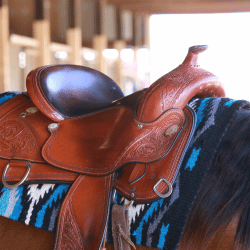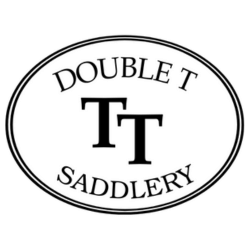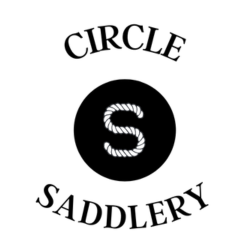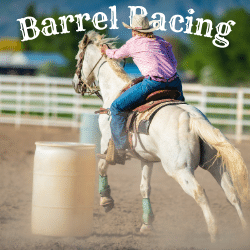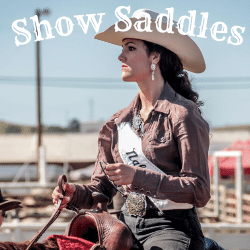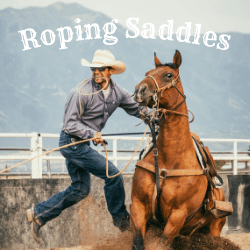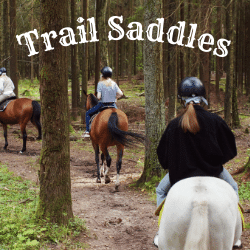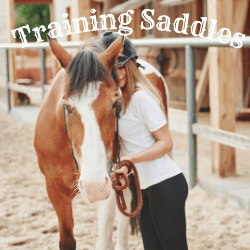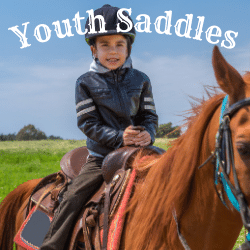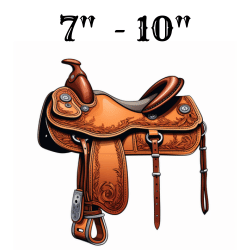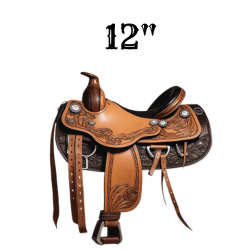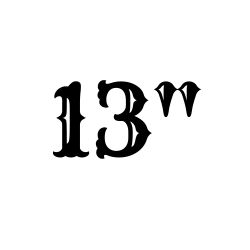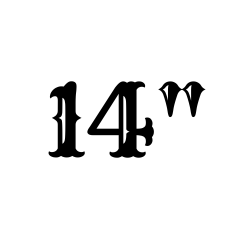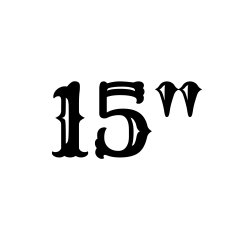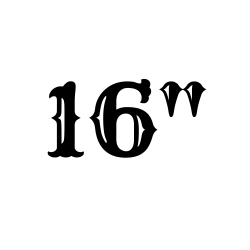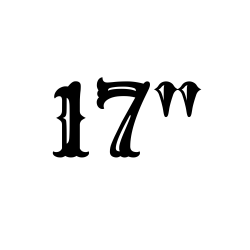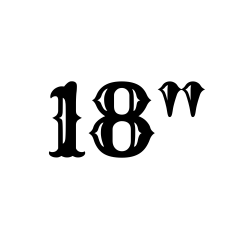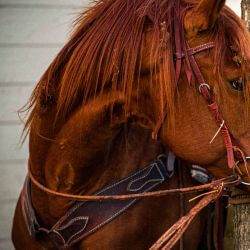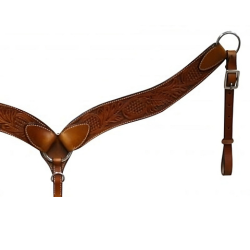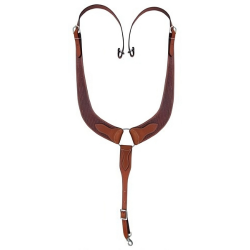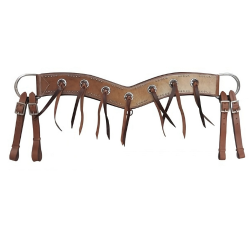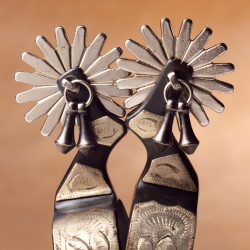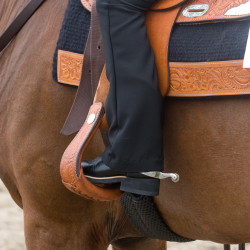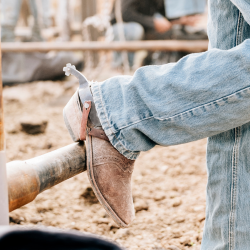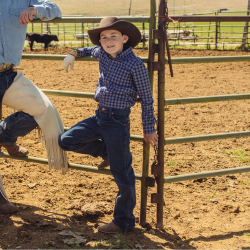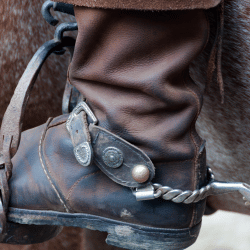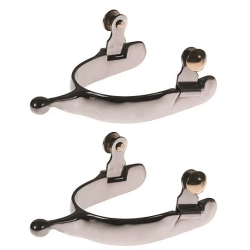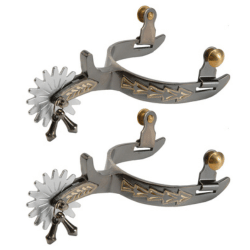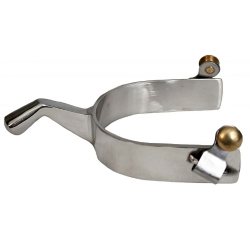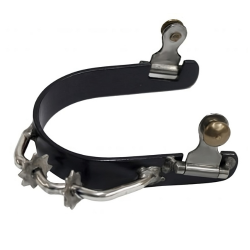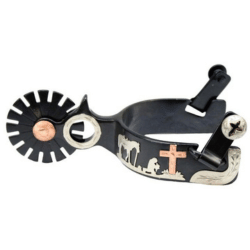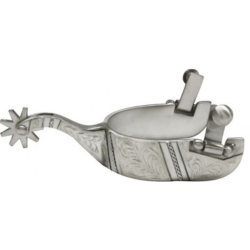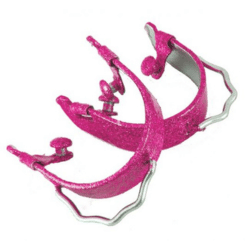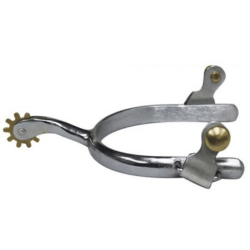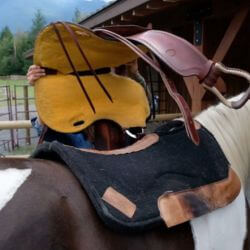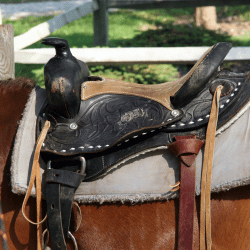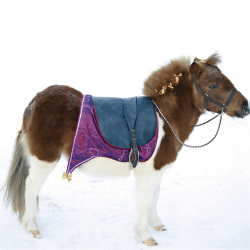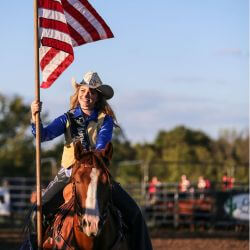If you're new to horse riding or looking to improve your skills, understanding how to use reins is essential. Reins are a vital tool for communication and control between the rider and the horse. They allow you to guide your horse, cue them for different movements, and establish a strong connection. In this blog post, we will explore the basics of using reins, the different types of reins and their uses, proper hand placement, common mistakes to avoid, and advanced techniques for better control. Whether you're a beginner or an experienced rider, mastering the art of using reins will greatly enhance your riding experience. So, let's dive in and discover the secrets to effective rein usage!
Understanding the Basics: The Role of Reins in Horse Riding
Reins play a crucial role in horse riding as they serve as the primary means of communication between the rider and the horse. The rider's hands on the reins transmit signals and cues to the horse, guiding them in different directions, controlling their speed, and communicating various commands. Understanding the basics of how reins work is essential for any rider, whether you are a beginner or have been riding for years.
One of the primary functions of the reins is to direct the horse's movement. By applying pressure on different parts of the horse's mouth through the reins, riders can communicate their desired direction. For example, pulling gently on the left rein will signal the horse to turn left, while applying pressure on the right rein will prompt a right turn. This basic understanding of rein usage is fundamental to effectively maneuver the horse in any riding situation.
In addition to directing the horse's movement, reins also play a role in controlling the horse's speed. By gently pulling back on the reins and applying slight pressure, riders can signal the horse to slow down or come to a complete stop. Conversely, releasing the pressure allows the horse to move forward at their desired pace. This control over the horse's speed is vital for maintaining safety and ensuring a smooth and comfortable ride.
Furthermore, reins are used to communicate commands to the horse for various movements and maneuvers. Through the application of different rein aids, riders can ask the horse to perform actions such as bending, flexing, changing gaits, or executing specific riding patterns. The rider's ability to effectively communicate these commands through the reins is crucial for achieving precision and harmony in riding.
It is important to note that rein communication goes beyond just physical cues. Horses are incredibly sensitive animals and can also interpret subtle changes in the rider's body language, weight distribution, and energy. Therefore, using reins goes hand in hand with the rider's overall body control and balance.
Understanding the role of reins in horse riding sets the foundation for developing effective communication and control with your horse. In the following sections, we will delve into the different types of reins, how to hold and use them correctly, common mistakes to avoid, and advanced techniques for better control. So, let's move on to explore the world of reins in greater detail.
Different Types of Reins and Their Uses
When it comes to horse riding, there are several types of reins available, each with its own unique design and purpose. Understanding the different types of reins and their uses can help you choose the most suitable option for your riding style and goals. In this section, we will explore some of the most commonly used reins:
Split Reins
Split reins are the most traditional and widely used type of reins. As the name suggests, they consist of two separate reins that are not connected in any way. Each rein is held independently in each hand. Split reins offer great versatility and control, allowing riders to make precise and separate adjustments to each side of the horse's mouth. They are commonly used in Western riding disciplines, such as reining and cutting.
Romal Reins
Romal reins are a variation of split reins that incorporate a long, braided leather or rawhide attachment called a "romal" at the end. The romal typically adds weight and length to the reins, providing a more substantial and balanced feel. Romal reins are often used in Western riding, particularly in disciplines such as Western pleasure and Western horsemanship. The romal is typically held in one hand, while the split reins are held in the other.
Loop Reins
Loop reins, also known as continuous reins or laced reins, are reins that are joined together with a continuous piece of material. They can be made of leather, nylon, or other materials, and they form a loop that allows riders to hold both reins in one hand. Loop reins are commonly used in English riding disciplines, such as dressage and show jumping. They provide a secure and direct connection between the rider's hand and the horse's mouth.
Draw Reins
Draw reins are specialized reins that are commonly used as training tools. They consist of long reins that attach to the girth or the saddle, pass through the bit rings, and then back to the rider's hands. Draw reins are designed to create a specific angle and encourage the horse to lower their head and neck. They can be helpful for developing proper head carriage and engagement of the horse's hindquarters, but they should be used under the guidance of an experienced trainer to avoid misuse or overuse.
Understanding the different types of reins and their uses allows riders to select the most appropriate option for their specific riding style, discipline, and goals. Whether you prefer the versatility of split reins, the elegance of romal reins, the simplicity of loop reins, or the training aid of draw reins, choosing the right reins can greatly enhance your riding experience. In the next section, we will delve into how to hold and use reins correctly to establish effective communication with your horse.
How to Hold and Use the Reins
Properly holding and using the reins is crucial for effective communication and control while riding. In this section, we will discuss the correct hand placement, adjusting the reins length, guiding your horse using the reins, and releasing the reins when necessary.
Proper Hand Placement
To hold the reins correctly, start by holding one rein in each hand. Place your thumbs on top of the reins, allowing your fingers to wrap around and close your hand. Keep a relaxed grip, avoiding excessive tension or stiffness in your hands and arms. Your hands should be positioned just above the withers, slightly wider than shoulder-width apart. This hand placement allows for good control and a direct line of communication between your hands and the horse's mouth.
Adjusting Reins Length
The length of the reins will depend on the riding discipline and the desired level of contact with the horse's mouth. In general, the reins should be adjusted to a length that allows a slight bend in the horse's neck without pulling on their mouth. If your reins are too loose, you may have difficulty in controlling the horse. If they are too tight, you risk applying excessive pressure or causing discomfort to the horse. Regularly check and adjust the reins' length throughout your ride, especially when transitioning between different gaits or movements.
Guiding Your Horse Using the Reins
To guide your horse, apply pressure on the reins in the desired direction. If you want to turn left, gently and evenly apply pressure on the left rein while maintaining a steady contact with the right rein. The same principle applies when turning right. It's important to maintain a balanced and consistent contact on both reins to provide clear signals to your horse. Remember to use your body position and weight aids in conjunction with the reins for effective communication.
Releasing the Reins
Releasing the reins is equally important as applying pressure. When you want to reward your horse or give them more freedom, gradually release the pressure on the reins by loosening your fingers and allowing the reins to slip through your hands. This release should be done smoothly and in a controlled manner, ensuring that you maintain a light and steady contact with the horse's mouth. Releasing the reins also helps to encourage relaxation and a soft response from your horse.
Mastering the art of holding and using the reins takes practice and sensitivity. It's essential to develop a feel for the horse's responses and adjust your rein aids accordingly. Remember to always ride with soft and responsive hands, maintaining a respectful and considerate connection with your horse. In the next section, we will explore some common mistakes riders make when using reins and how to avoid them.
Common Mistakes when Using Reins and How to Avoid Them
Using reins correctly is a skill that takes time and practice to master. Unfortunately, there are common mistakes that riders often make when handling the reins, which can hinder effective communication with the horse. In this section, we will discuss some of these mistakes and provide tips on how to avoid them.
Holding Reins Too Tightly or Loosely
One common mistake is holding the reins with excessive tension or, conversely, with a loose grip. Holding the reins too tightly can create discomfort for the horse, restrict their movement, and make it difficult for them to respond to your cues. On the other hand, holding the reins too loosely can result in a lack of control and a loss of connection with the horse's mouth. Strive for a balanced and relaxed grip on the reins, maintaining a consistent contact without excessive tension.
Incorrect Hand Positioning
Another mistake is having incorrect hand positioning on the reins. Your hands should be positioned slightly above the withers, maintaining a straight line from your elbow to the bit. Avoid dropping your hands too low or holding them too high, as this can negatively affect your balance and the horse's response to your aids. Aim for a neutral and relaxed hand position that allows for clear and effective communication.
Reliance on Reins for Balance
Using the reins for balance is a common mistake, especially for beginner riders. Relying solely on the reins for balance can create an unsteady and unbalanced position, making it difficult to communicate effectively with the horse. Instead, focus on developing a strong and independent seat, relying on your core muscles and leg aids for balance. This will allow you to use the reins more effectively as a communication tool rather than a source of balance.
Inconsistent Rein Aids
Consistency in your rein aids is crucial for clear communication with your horse. Inconsistent application of rein aids can lead to confusion and frustration for the horse. Ensure that your rein aids are clear, consistent, and timed appropriately with your other aids. Practice using consistent pressure, release, and timing to help your horse understand and respond to your cues effectively.
Over-reliance on Rein Aids
While the reins are an important tool for communication, it's essential not to rely solely on them. Overusing the reins can result in a heavy and unresponsive horse. Remember to incorporate other aids, such as your seat, legs, and voice, to effectively communicate with your horse. Strive for a balanced and harmonious use of all aids to create a more nuanced and responsive connection with your horse.
By being aware of these common mistakes and actively working to avoid them, you can improve your rein handling skills and enhance your communication with your horse. In the next section, we will explore advanced rein techniques that can help you achieve better control and finesse in your riding.
Advanced Reins Techniques for Better Control
Once you have mastered the basics of holding and using reins, you can explore advanced techniques that provide even greater control and finesse in your riding. In this section, we will discuss three advanced rein techniques: direct reining, neck reining, and plow reining.
Direct Reining
Direct reining is a technique commonly used in English riding disciplines such as dressage and show jumping. With direct reining, each rein is used independently to guide the horse's movement. To execute a turn or change of direction, you apply pressure on the rein in the desired direction while maintaining a steady contact with the opposite rein. Direct reining requires coordination and precision to communicate precise cues to the horse.
Neck Reining
Neck reining is a technique primarily used in Western riding disciplines such as reining and trail riding. Unlike direct reining, neck reining allows the rider to use subtle cues with minimal rein contact. To neck rein, the rider applies pressure on the side of the horse's neck with one rein while maintaining a loose rein contact. The horse is trained to respond to the neck rein by moving away from the pressure and turning in the desired direction. Neck reining provides a more relaxed and subtle way of communicating lateral movements and turns.
Plow Reining
Plow reining, also known as direct plow reining or two-handed plow reining, is a technique used primarily in Western riding disciplines. It involves using both hands on the reins, similar to direct reining, but with the reins held wider apart. This wider hand position allows for increased lateral flexion and control over the horse's shoulders and body. Plow reining is often used in maneuvers that require precise control, such as spins, sliding stops, and rollbacks.
These advanced rein techniques require practice and fine-tuning to achieve mastery. It's important to remember that each technique has its own purpose and application, and it may vary depending on the riding discipline or the specific requirements of a maneuver. Working with a knowledgeable instructor or trainer can greatly help in honing these advanced techniques and refining your riding skills.
By incorporating these advanced rein techniques into your riding repertoire, you can enhance your control, responsiveness, and overall riding performance. However, it's important to always prioritize the well-being and comfort of your horse, ensuring that your rein aids are clear, fair, and applied with sensitivity. In the next section, we will conclude our exploration of using reins by summarizing the key points and emphasizing the importance of becoming proficient with reins for a better riding experience.
Conclusion: Becoming Proficient with Reins for a Better Riding Experience
Mastering the art of using reins is a fundamental aspect of horse riding. Throughout this blog post, we have explored the basics of reins, the different types and their uses, how to hold and use them correctly, common mistakes to avoid, and advanced techniques for better control. By becoming proficient with reins, you can greatly enhance your riding experience and communication with your horse.
Using reins effectively allows you to establish a clear and precise line of communication with your horse. It enables you to guide their movements, control their speed, and communicate various commands and cues. By understanding the role of reins and practicing proper hand placement, you can establish a strong connection with your horse and achieve harmony in your riding.
It is important to be aware of common mistakes when using reins and actively work to avoid them. Find the balance between holding the reins too tightly or loosely, maintain correct hand positioning, and avoid relying solely on reins for balance. Developing consistency in your rein aids and incorporating other aids, such as your seat and legs, will further enhance your communication with your horse.
As you progress in your riding journey, you can explore advanced rein techniques such as direct reining, neck reining, and plow reining. These techniques provide greater control, finesse, and versatility in your riding, allowing you to execute precise movements and maneuvers.
Becoming proficient with reins requires practice, patience, and sensitivity. It is essential to develop a feel for your horse's responses and adjust your rein aids accordingly. Working with an experienced instructor or trainer can provide valuable guidance and feedback to help you refine your rein handling skills.
Remember, effective rein usage is not just about physical cues but also about developing a harmonious partnership with your horse. Building trust, understanding, and respect are key components of successful rein communication.
So, embrace the journey of mastering reins and enjoy the rewarding experience of riding in unity with your horse. With dedication and practice, you can achieve a higher level of control, communication, and enjoyment in your equestrian pursuits. Happy riding!

